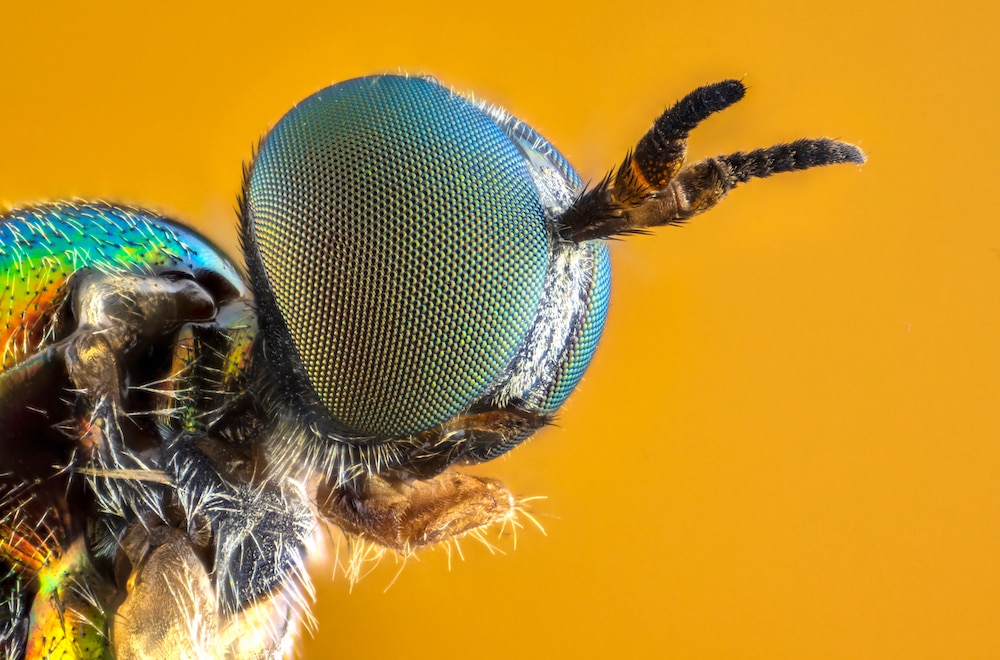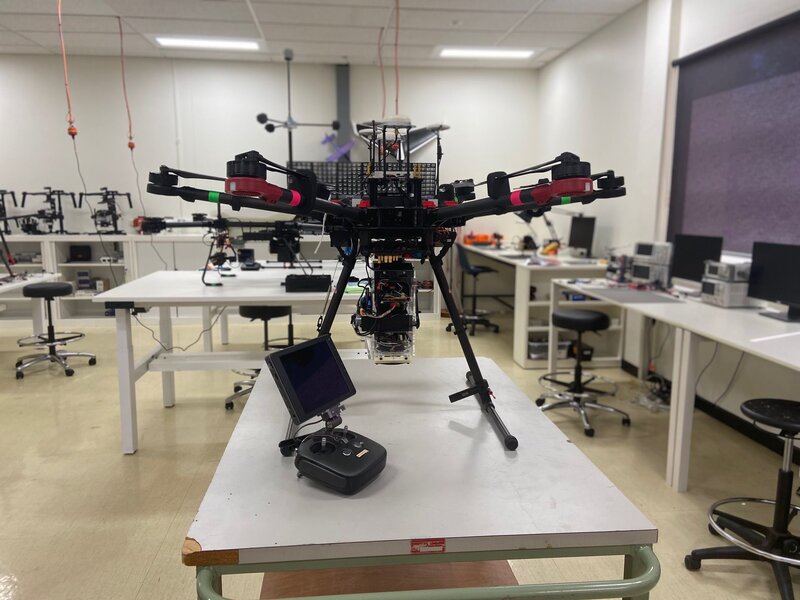Create a free profile to get unlimited access to exclusive videos, sweepstakes, and more!
Mind-blowing bug-brain tech can now sense drones from far away
This is proof we don't give insects enough credit.

We live in the age of drones. They are buzzing everywhere, and one could be silently watching you right now, without you ever realizing it.
It is unlikely an enemy drone will be spying on you in the shower. However, they’re out there and often difficult to detect, which is why they can get away with a sort of robotic espionage. Figuring out where they are just got easier, though, because of bug brains. That’s right — the way the brain of a hoverfly processes visual information to avoid predators has been reverse-engineered for drones to pick up nearly imperceptible acoustic signals from other hovering drones.
While drone cameras are nothing new, and technology based on insect bio-vision has already given drone eyes an advantage, this is the first time acoustic detection has ever been used to seek out drones from the other side. The same mechanisms used by hoverflies to see irregularities (which could be predators) were converted to pick up on sounds. Biology obviously knows what it’s doing if you ask Russell Brinkworth of the University of South Australia, who coauthored a study recently published in The Journal of the Acoustical Society of America.
“The vision system of hoverflies has evolved to detect the presence of anomalies in clutter,” he told SYFY WIRE. “This can be a matter of life and death where seeing a predator, or conspecific, early will allow more time to perform the appropriate response action.”
Hoverflies have an evolutionary advantage going for them. For the survival of your species, you need to avoid getting eaten. Many hoverfly species are disguised as wasps, a built-in cosplay which already makes them unappetizing, but their visual acuity is almost supernatural. They can tell when something suspicious is going on even when it may seem there is too much background noise, a problem often faced in dark environments. This has already made it possible to detect unauthorized drones in the visual and infrared spectra. Now the sneakiest ones can be heard.
Reverse-engineering hoverfly vision involved morphing acoustic signals into 2D images. Now imagine that in the realm of sound. This is not unlike how your ear acts as a transducer that turns inaudible pressure into sound you can actually hear. Different sensors, in the form of hair cells, pick up on certain frequencies, or pitches, which range from high to low. Matching a sensor response to the frequency that sensor responded to can reveal what sound was heard. The system then converts sound into one-dimensional signals that are then stacked and made into a two-dimensional image known as a spectrogram.
“You stack those outputs over time and convert them to a 2D signal with frequency on one side, time on the other, with the amplitude being the intensity of a particular frequency at a particular time,” said Brinkworth. “It’s like a 2D image of the sound from a single microphone.”
To literally get into a hoverfly’s head, Brinkworth and his team inserted micro-electrodes into individual neurons in its brain. He then exposed the fly to a visual stimulus such as a flash of light or a video. What he wanted to see was its brain response, which he then used to figure out how the fly turned what it saw into neural signals. When hoverflies see what could be a hungry creature waiting to snap them up, this is a trigger to automatically turn visual noise down so they can get a better look. This function in their brains has no on or off switch.
Without the auto-response of fly brains, the drone sound detector model had to be tuned by the researchers to enhance sounds that stood out. Putting it to work will eventually extend the detection range for drones. This is going to be a big deal when it comes to military operations, which often use weaponized drones that can lead to mass destruction, and also for keeping drones out of the way at airports and military bases before they can spy on what should not be seen.
“We can extend the detection range for any system, and not because we have a better detector or sensor,” Brinkworth said. “The reason is that we are able to work with any sensor to improve data that is subsequently sent to a detector system.”
This is just another reason that the insects deserve more credit than we humans give them.















